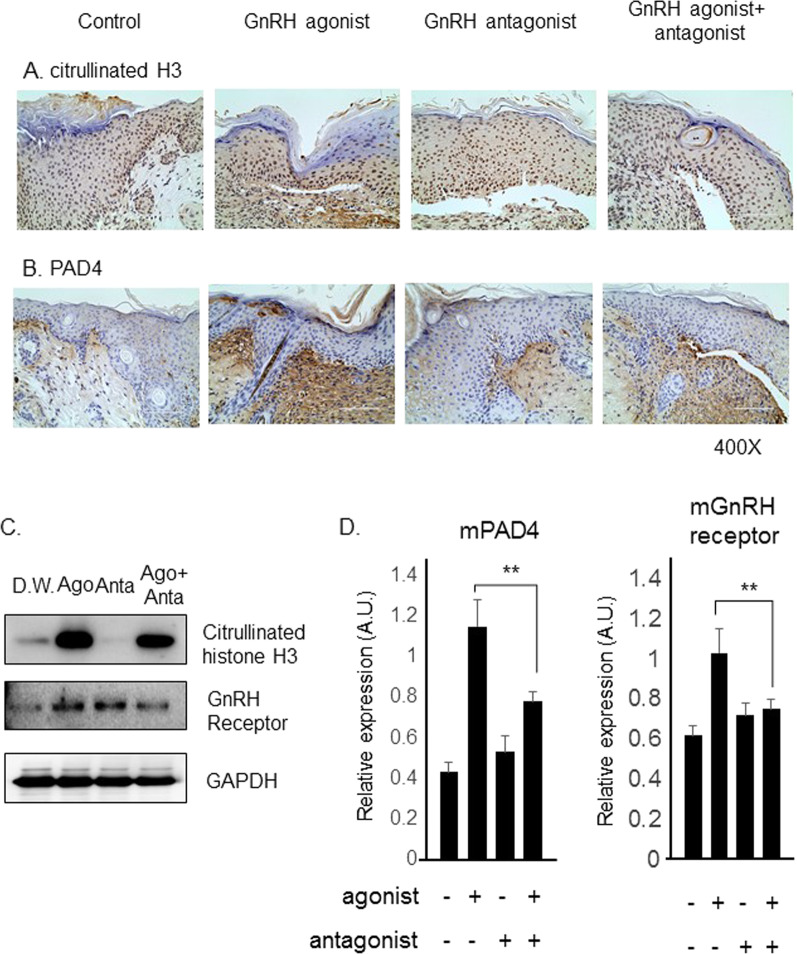Fig. 2.
Gonadotropin-releasing hormone (GnRH) agonist treatment increased PAD4 expression, a marker of NET generation (NETosis), in a mouse model of diabetic wound healing. Immunohistochemistry for a citrullinated histone H3 and b PAD4 at wound sites in the mouse model of diabetic wound healing. GnRH treatment increased the expression of citrullinated histone H3 and PAD4, which are markers for NETosis, and GnRH antagonist treatment suppressed their expression. c Western blotting of citrullinated histone H3 and GnRH receptor expression in diabetic skin wound tissues. d Real-time polymerase chain reaction analysis for the detection of PAD4 and GnRH receptor mRNA expression levels in diabetic skin wound tissues. Data are from three independent experiments with four mice per group. **P < 0.005

